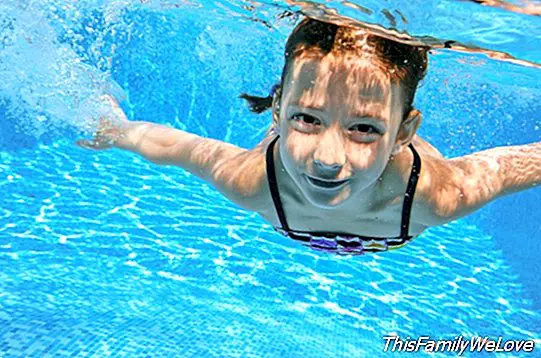Drownings for children: prevention tips for AEP

The high temperatures come with summer and the need to seek measures to avoid suffering this heat is a must. A good decision is to go to a pool where the bathroom makes us forget this embarrassment while taking advantage of all the games offered by the water. But beware, these places can become the scene of numerous accidents that can transform fun into tragedy.
To prevent these incidents from occurring, we present a series of proposals from the Spanish Association of Pediatrics, AEP, with which to control that everything that happens in the pool is a safe activity. In this way you can avoid drowning children only get a series of guidelines so that the fight with the heat in the water is fun and nothing else:
Prevention in the pool: first, float and then swim
Teaching the little ones to defend themselves in the water is one of the main measures that must be taken to avoid drowning. The pediatricians recommend that it is from the age of four when the children begin to go to swimming lessons to learn these notions with which to function in this environment and avoid numerous accidents. The AEP also specifies that although this age is recommended, other factors must be taken into account, such as whether there is a health problem, the child's emotional maturity and other physical limitations.
Another issue that can be learned in these courses is how to jump into the pool as we often see how a bad dive can be a blow to a delicate area of the body. In these swimming lessons are also indicated the guidelines to enter the pool in the safest way avoiding any possible mishap in this regard. It is always preferable for children to throw themselves into the water standing up.
Surveillance: essential in the face of childhood drownings
Remember that learning to swim is not synonymous with drowning. This danger can haunt although the child already knows certain notions to defend themselves in the water, in fact many adults are also victims of this type of accidents. For this reason it is also necessary that when the child enters the pool, the elderly attend to their behaviors:
- When babies or small children are in or around water They must always be within reach and supervised by an adult with swimming experience and knowledge. Pediatricians recommend for this surveillance that the distance that separates us from the minor must be less than the length of the caregiver's arm so that at any time they are always within arm's reach.
- In case they are older children with notions of swimming, There must always be an adult who knows how to swim well or a lifeguard. These people must never lose sight of them and their attention must be placed at all times on children who are inside the water in the pool or at sea. If this caregiver must be absent, a substitute that assumes this function can not be absent.
It is also recommended that this adult who is in the care of the youngest know how to perform a rescue in case it is necessary and even make a resuscitation maneuver if necessary. Under no circumstances can this figure be replaced by that of a minor although he knows how to swim since the physical characteristics of this may not be adequate to jump into the water and get someone out of the water.
Teenagers: extreme precautions in the pool
Pediatricians also put the spotlight on adolescents and advises their parents to warn them of the dangers of alcohol intake before jumping into the water, norm that adults should also be clear about. In this sense, they are always recommended both for teenagers and for younger children who, before leaving home on the way to the swimming pool, make clear a series of rules related to this visit so that there is no doubt between what can or can not be done. do.
Damián Montero




